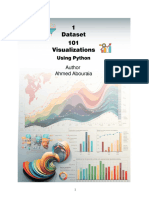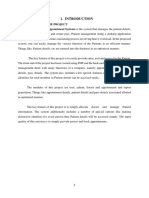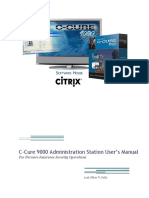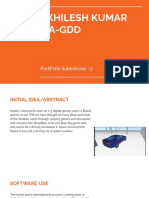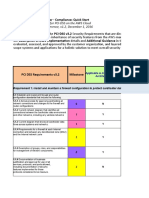Introduction to Data
Visualization Tools
Sensitivity: Internal
� Agenda
:
1 Importance of Data Visualization in Data Science
2 Overview of Python Libraries for Visualization
3 Introduction to Visualization Best Practices
Sensitivity: Internal
� Importance of Data
Visualization in Data
Science
Sensitivity: Internal
� 1.1 Introduction to Data
Visualization
• Data visualization is an essential component of data science that serves as a
bridge between raw data and insights. In a world where data is generated in
enormous volumes, it can be overwhelming and challenging to extract
meaningful information without proper representation. Data visualization helps
transform complex and abstract data into visually accessible, easily
interpretable charts, graphs, and diagrams. This visual storytelling technique
makes patterns, trends, and outliers in data more apparent, ensuring that even
non-technical audiences can grasp the underlying insights.
Sensitivity: Internal
� 1.1 Introduction to Data
Visualization
• By presenting data in a graphical format, the visualization process enables
decision-makers to gain faster and more accurate insights, enabling better
business strategies, research directions, and policy decisions. It moves beyond
traditional spreadsheets, giving a clearer understanding of trends,
distributions, and relationships between different data points.
Sensitivity: Internal
� 1.2 Uncovering Patterns, Trends, and
Outliers
• One of the primary functions of data visualization is to uncover patterns and
trends that may not be immediately obvious when examining raw data. Often,
data collected over time or across different variables can contain hidden
patterns that are critical for predictive modeling and decision-making.
Sensitivity: Internal
� 1.2 Uncovering Patterns, Trends, and
Outliers
• In sales data, a line graph can easily display the trend over time. Are there
seasonal spikes? Is there a decline during specific months? A trend line could
reveal periodicity (like monthly or yearly patterns) or highlight changes in
sales velocity.
Sensitivity: Internal
� 1.2 Uncovering Patterns, Trends, and
Outliers
• Similarly, visualizations such as scatter plots or heatmaps are extremely
useful for spotting outliers—data points that deviate significantly from the
general pattern. For instance, if a scatter plot of customer ages vs. income
shows most data points clustered around a certain region but a few points
appear far away, those points may represent outliers—possibly fraudulent
transactions or errors in the data.
Sensitivity: Internal
� 1.3 Simplifying Communication with
Stakeholders
• Data visualization plays a critical role in communicating insights effectively to
both technical and non-technical audiences. Stakeholders—whether they are
executives, department heads, or clients—often need to make decisions based
on data-driven insights but may not have the time or expertise to analyze raw
data themselves. Graphs, charts, and interactive dashboards make it
easier for them to understand complex data quickly.
Sensitivity: Internal
� 1.3 Simplifying Communication with
Stakeholders
• Consider a dashboard showing the performance of different product lines over
time. An executive might need to make a decision about where to focus
resources next. With data visualizations like bar charts, pie charts, or line
graphs, they can instantly understand which products are performing well and
which are underperforming, without diving into raw sales data.
Sensitivity: Internal
� 1.4 Enhancing Decision-
Making
• Decision-making is one of the core applications of data visualization. In many
industries, visualizing key metrics helps optimize strategies, whether in
marketing, operations, healthcare, or finance. Data visualizations highlight
critical performance indicators (KPIs) that enable businesses to track their
success and adjust strategies in real-time.
Sensitivity: Internal
� 1.4 Enhancing Decision-
Making
• A company might track its monthly revenue, customer churn rate,
product performance, and ad spend efficiency. Using a dashboard that
aggregates all these metrics visually enables managers to make quick
decisions. For example, if the customer churn rate increases dramatically,
the management team can quickly analyze which product lines or marketing
campaigns are correlated with this change and adjust the business strategy
accordingly.
Sensitivity: Internal
� 1.5 Summarizing Complex
Datasets
• Data visualization is invaluable when summarizing large and complex
datasets, especially in the early stages of data analysis. Data scientists and
analysts often work with datasets that can be vast and multidimensional,
containing hundreds or thousands of variables. Without visual aids, analyzing
such complex data would be tedious and inefficient.
Sensitivity: Internal
� 1.5 Summarizing Complex
Datasets
• Consider a customer segmentation project where you need to analyze
purchasing behavior across multiple demographics (age, income, geographic
location, etc.). Instead of reviewing each data point, a 3D scatter plot or
cluster map can reveal groups of customers with similar buying patterns,
enabling you to identify market segments or customer personas quickly.
Sensitivity: Internal
� 1.6 Making Data
Intuitive
• One of the key reasons why data visualization is so important is that it
transforms data into an intuitive, digestible format. Human brains are
wired to understand images and patterns faster than text. A good
visualization uses shapes, colors, and spatial relationships to make it easy for
the viewer to understand complex data quickly, even if they don’t have a
background in data science or statistics.
Sensitivity: Internal
� 1.7 Example Use Case: Line Chart vs.
Raw Data
• Imagine you're working with sales data for an e-commerce store. The raw data
might contain 10,000 rows, with each row showing individual transaction
details. Without visualization, it’s difficult to understand whether sales are
increasing or decreasing. By plotting the monthly sales trend on a line
chart, you could immediately see:
• A steady increase during certain months (perhaps related to a seasonal
promotion).
• A sharp drop in sales during a particular month (which could be linked to
external factors, like a market downturn or supply chain issues).
Thus, line charts and other visualizations provide
a much clearer picture of the data’s story than
raw numbers.
Sensitivity: Internal
� 1.8 Conclusion
• In data science, visualization is not just about making data "pretty"—it’s
about making it more understandable, more accessible, and more actionable.
Good data visualizations reveal patterns, trends, and outliers, simplify complex
datasets, and enhance decision-making. They also play a key role in
communicating findings to different stakeholders and ensure that data-driven
decisions can be made quickly and confidently.
Sensitivity: Internal
� Overview of Python
Libraries for Visualization
Sensitivity: Internal
� Matplotlib
• Matplotlib is one of the most foundational and widely-used libraries for
creating static 2D plots in Python. It provides a comprehensive, low-level API
that allows you to create a wide range of visualizations. While it is highly
customizable, this flexibility comes at the cost of requiring a lot of code for
customization.
Sensitivity: Internal
� Key Features:
• Complete Control: Matplotlib gives the user full control over every aspect of
the plot, including the figure, axes, and gridlines, allowing fine-tuned
adjustments to the visualization.
• Wide Range of Plots: It supports various types of plots, including line plots, bar
charts, histograms, scatter plots, pie charts, box plots, and more.
• Customization: Users can modify every component of a plot, from color
schemes to axis labels, to create exactly the kind of visualization they need.
• Compatibility: Since it's the most basic library, it's compatible with a variety of
other libraries such as pandas and NumPy, allowing seamless integration with
data manipulation tools.
Sensitivity: Internal
� Example Use Case:
• Matplotlib is widely used for creating simple and quick line charts and bar
charts, such as plotting the relationship between sales over time, or
visualizing the distribution of customer ratings. A simple line chart for time
series data could be created with the following code:
Sensitivity: Internal
� Advantages:
• Provides complete control over the plot's appearance.
• Extremely flexible and suitable for custom visualization designs.
• Ideal for users who require granular control over their plots.
Disadvantages:
• Requires more code to create visually appealing plots.
• Can be challenging for beginners due to its complexity.
Sensitivity: Internal
� Seaborn
• Seaborn is built on top of Matplotlib and is often considered an easier-to-use
higher-level interface for creating beautiful and informative statistical plots.
It significantly simplifies the process of creating complex visualizations,
especially when working with pandas DataFrames.
Sensitivity: Internal
� Key Features:
• Beautiful Default Styles: Seaborn comes with attractive default themes and
color palettes that make it easy to create professional-looking visualizations.
• Integrated with pandas: Seaborn integrates seamlessly with pandas
DataFrames, allowing users to visualize data directly from them without the
need to convert to numpy arrays or other structures.
• Statistical Plots: While Matplotlib is great for basic plots, Seaborn excels at
statistical visualizations like distribution plots, heatmaps, and pair plots that
reveal patterns in the data more easily.
• Ease of Use: Creating complex plots like regression lines, violin plots, and
heatmaps is straightforward with Seaborn's high-level API.
Sensitivity: Internal
� Example Use Case:
• Seaborn simplifies the process of visualizing complex statistical relationships.
For example, a scatter plot with regression lines can be created in a single
line of code:
Sensitivity: Internal
� Advantages:
• Less code required for visually appealing and complex plots.
• Great for statistical graphics like regression plots, pair plots, and heatmaps.
• Easy integration with pandas for quick data visualization.
Disadvantages:
• Less customizable than Matplotlib; it abstracts away some of the granular
control over plot elements.
• Not suitable for all types of plots—Matplotlib is sometimes needed for more
complex customizations.
Sensitivity: Internal
� Plotly
• Plotly is an advanced, interactive visualization library that is especially useful
for web-based visualizations. It is well-suited for creating interactive charts,
which can be explored and manipulated in real-time. Unlike Matplotlib and
Seaborn, Plotly focuses on user interaction and is great for creating
dashboards and online reports.
Sensitivity: Internal
� Key Features:
• Interactive Visualizations: Plotly excels at interactive charts that allow users to
zoom, hover, and click to explore the data in more detail. This makes it ideal
for presentations, business dashboards, and web-based applications.
• Web Integration: Plotly integrates well with web technologies such as HTML,
JavaScript, and Django, making it ideal for creating data visualizations for
websites or web applications.
• Range of Plot Types: Plotly supports various types of plots, including 3D plots,
geographical maps, and heatmaps.
• Exporting and Sharing: Visualizations created with Plotly can be shared easily
via URLs or embedded in web pages and reports.
Sensitivity: Internal
� Example Use Case:
• A scatter plot showing a relationship between two variables with hover text
can be easily created using Plotly:
Sensitivity: Internal
� Summary
• Matplotlib: Ideal for static 2D plots with full control over customization. Best for
users who need precise, tailored visualizations.
• Seaborn: Built on Matplotlib but much easier to use, providing beautiful
statistical plots with less code. Perfect for quick and effective statistical
visualizations.
• Plotly: Best for interactive and web-based visualizations, offering dynamic
charts that allow real-time exploration. Great for creating dashboards and
online reports.
Sensitivity: Internal
� Advantages:
• High-quality, interactive visualizations that can be explored in real-time.
• Easily integrable into web applications, making it ideal for dashboards.
• Supports 3D and geographical data visualization.
Disadvantages:
• More complex than Matplotlib and Seaborn for simple visualizations.
• Performance may be affected with large datasets or complex charts.
Sensitivity: Internal




